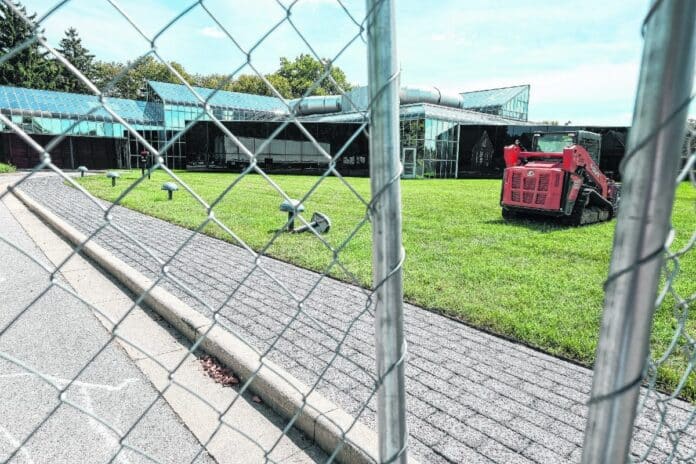
Staff Reports
Cummins has applied for a demolition permit to tear down its former medical facility commonly referred to as COHA after more than five years of attempting to find a new owner.
Company officials released a statement Friday in response to questions about the planned demolition at 605 Cottage Ave., saying the building served Cummins and the Columbus community well, but it is no longer sustainable or commercially viable.
“Cummins met with many stakeholders over the past few years to determine what is best for this piece of property and the community going forward, including members of the city, regional developers, community leaders and art and architectural stakeholders. Cummins plans to retain the property and will evaluate future use in the best interests of Cummins and the community,” according to the statement.
[sc:text-divider text-divider-title=”Story continues below gallery” ]
The 21,000-square-foot, three-level glass enshrouded building, constructed in 1973, was originally known as the Columbus Occupational Health Association, later becoming the Cummins Inc. Health Center. The building’s design architects were Hardy Holzman Pfeiffer Associates of New York City, a group of architects who are no longer working together, and the site also features a landscape design by Dan Kiley.
The application for the demolition permit was submitted Aug. 24, but had not yet been paid for or picked up as of Friday morning, county officials said.
Dan Cristiani Excavating Co. Inc. of Clarksville is listed as the contractor on the permit application, and Star Environmental out of Indianapolis is listed as the abatement contractor.
The permit lists a demolition start date of this coming Wednesday and a completion date of Nov. 9.
The building was among those that sustained damage in the 2008 Columbus flood, and repair work was done on the facility at that time.
Designed as an innovative space to deliver medical services, the building features a tremendous amount of glass, open spaces with sloped walkways and exposed mechanicals that were once painted in bright colors, but later revamped. The building was honored in 1976 with a national American Institute of Architects honor award, in which the jury said that “careful organization of the ordinary mechanical and structural elements brings interest and excitement to this small health center — a well organized plan exposes routine medical functions to both patient and technician which relieves the tedium of clinical work and the anxiety of patients.”
Richard McCoy, founding director of Landmark Columbus, which is dedicated to caring for and celebrating the world-renowned design and architectural heritage of Columbus, said the loss of the COHA building was disappointing, but understandable.
McCoy described the building as a “significant building” in Columbus, and noted the Kiley landscape as another important feature. Its significance is also enhanced in that it is a nearly 50-year-old building that was commissioned by a notable client — Cummins and J. Irwin Miller — with that connection to Columbus’ history.
In 2012, a statewide survey by preservationists rated the building “outstanding” on a four-level grading scale with outstanding being the highest and non-contributing being the lowest.
“But having said all that,” McCoy said, “this building was designed for a specific use — a medical treatment and testing center in downtown Columbus.”
Cummins actively marketed the building for almost six years and found no buyers, he said. “And the cost was considerable to keep this building in the shape to be sellable, he said.
“It’s a very challenging building — it’s a complex building,” McCoy said of the structure. “It has a large number of intertwined spaces and it would take a particular type of client to want to use this building.”
Contributing to the building’s demise is also its age, and the amount of money that would be needed to bring it up to today’s standards of downtown office space in Columbus — if there even is demand for office space at this time, McCoy said.
When a building is 50 years old, it often means it needs to be completely redone, from the mechanicals and beyond, if it is to have a reasonable use for the future, McCoy said.
While McCoy is sad to see the building go, he also said there is something to be optimistic about in the experiment that was the COHA building.
“Not every building lasts 50 years,” he said. “So let’s hope that something great comes back in this space.”




